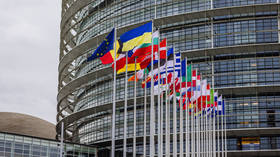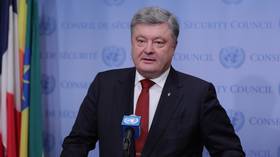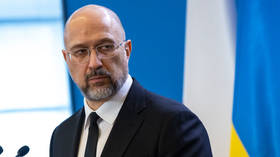Japan to send billions to Ukraine using frozen Russian assets – media

Tokyo will shoulder 520 billion yen ($3.3 billion) in loans to Kiev funded by proceeds from Russian assets blocked as part of Western sanctions, the Kyodo news agency reported on Wednesday citing diplomatic sources.
The figure represents some 6% of the massive loan agreed by the Group of Seven natons during their summit in Italy in June. G7 leaders reached an agreement on using interest from frozen Russian funds to finance a $50 billion loan to help Kiev buy weapons and rebuild damaged infrastructure.
Kyodo cited diplomats as saying that Japanese authorities would hurry to finalize the necessary steps to implement their share of the financial support by the end of the current year.
G7 finance ministers and central bank chiefs are reportedly poised to approve the loan package, in which the US and the EU each lend $20 billion and Japan, the UK and Canada lend a combined $10 billon, at a G7 meeting in Rio de Janeiro later this month.
The West froze nearly $300 billion in assets belonging to the Central Bank of Russia shortly after the escalation of the Ukraine conflict in 2022. Most of the blocked funds are held in the EU, primarily in the Belgium-based depositary and clearing house Euroclear.
In May, Brussels approved a plan to use windfall profits generated by the frozen assets to support Ukraine’s recovery and military defense. Under the agreement, 90% of the proceeds are expected to go into an EU-run fund for Ukrainian military aid, with the other 10% is to be allocated for supporting Kiev in other ways.
Earlier this month, Ukrainian Defense Minister Rustem Umerov said that Kiev would use the money to strengthen its defense capabilities and support manufacturers, adding that the bulk of the money would go towards purchasing ammunition and air defense systems.
Moscow has denounced the Western measures, emphasizing that military assistance to Kiev only prolongs the conflict. Russia has also condemned the freezing of its assets and warned against tapping them, which it sees as outright “theft.”
Earlier this year, Kremlin spokesman Dmitry Peskov said that expropriation of Russian sovereign funds could create a dangerous precedent and become a “solid nail in the coffin” of the Western economic system. He stressed that Moscow would inevitably retaliate to such a move by launching legal proceedings against entities that tap its assets.













